You won’t be looking to Carpet the first time for a lesson in modern geopolitics. Unless you’re looking at an Afghan war rug. Made in the city of Sheberghan in northern Afghanistan and the Afghan settlements in Pakistan, these carpets – with motifs of tanks, cannons, machine guns: symbols of violence – began to appear on the market after the Soviet invasion of Afghanistan in 1979.
Despite the fact that they are not decorative, Afghan war-era souvenirs remain big sellers in the global souvenir market. It’s their folk origins that piqued designer Pavitra Rajaram’s interest, but as she delved deeper, she was even more intrigued by what they communicate about design as history. “We’ve always had this Western way of understanding history,” says Rajaram, days before heading to Milan to unveil Majnun, a capsule collection designed for Jaipur rugs, at the prestigious Salone del Mobile. “We think that if it’s not written in a book, it’s not linear, it’s not a record. But the fact is we also record culture in music, dance, decorative objects, crafts.
Designer Pavitra Rajaram
The war rug is a direct inspiration for one of the five carpets designed by Rajaram for Majnun – but with an “ambitious” twist. “In the style of an Afghan war carpet, I show a soldier in uniform, but scattered around him are flowers that represent hill stations,” she says. “The term ‘hill station’ is unique to India. It originated because the British went to these cold places, and to get there they had to build railroads. ‘Sipahi’ [the carpet] Then becomes a story about India’s colonial history.
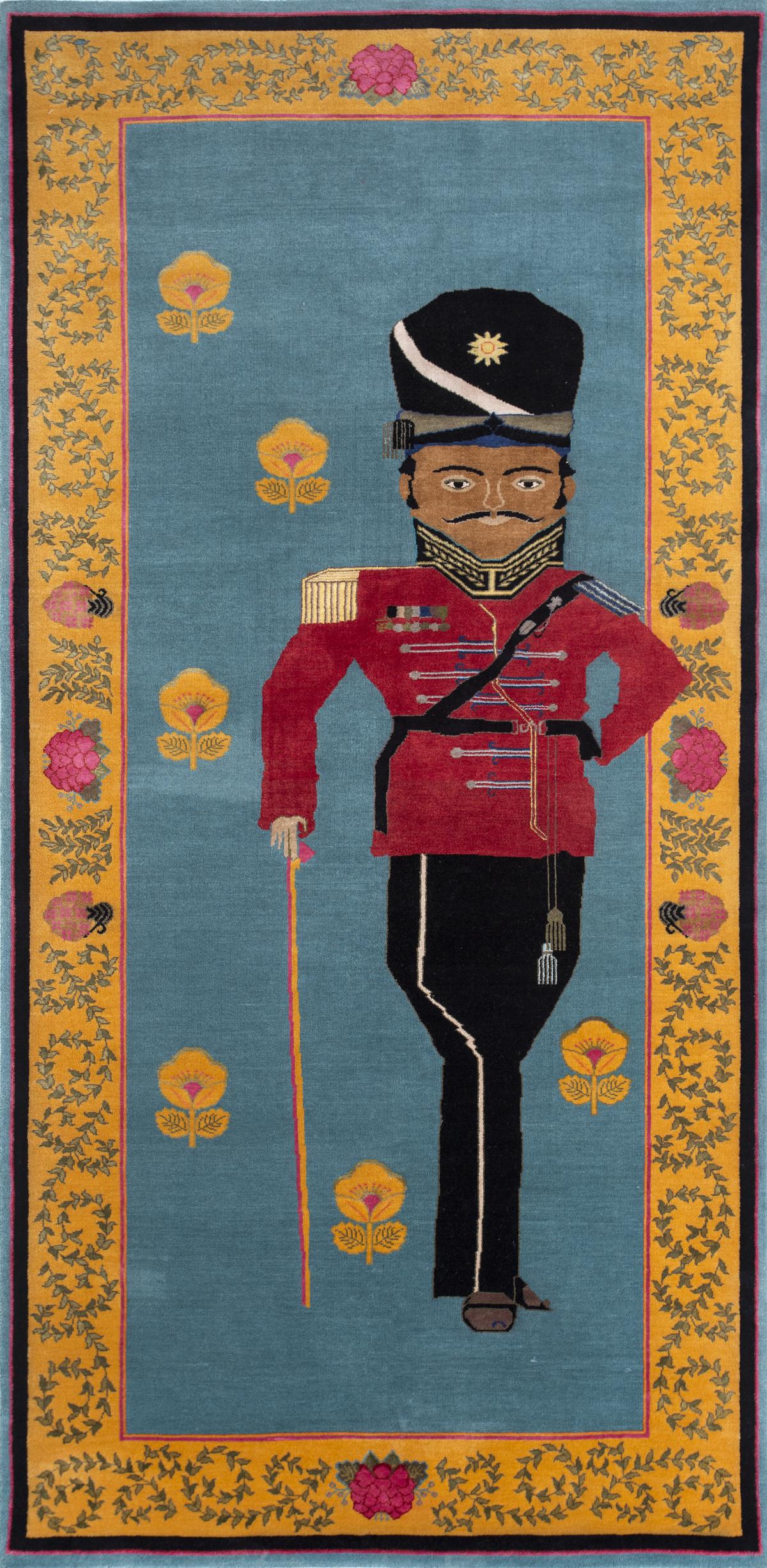
Constable
five stories woven in wool and silk
For Majnun, Rajaram has taken five iconic carpet traditions from the subcontinent, Asia and Asia Minor, and explored them in a contemporary idiom. The ‘Arjumand’ is a traditional Persian Kashmiri carpet named after Mumtaz Mahal. It is inspired by the Mughal gardens of Kashmir, but in Rajaram’s work, it also has elements of Chinese scroll paintings, such as clouds and willow trees. Woven into this carpet is a conversation on the Silk Road.
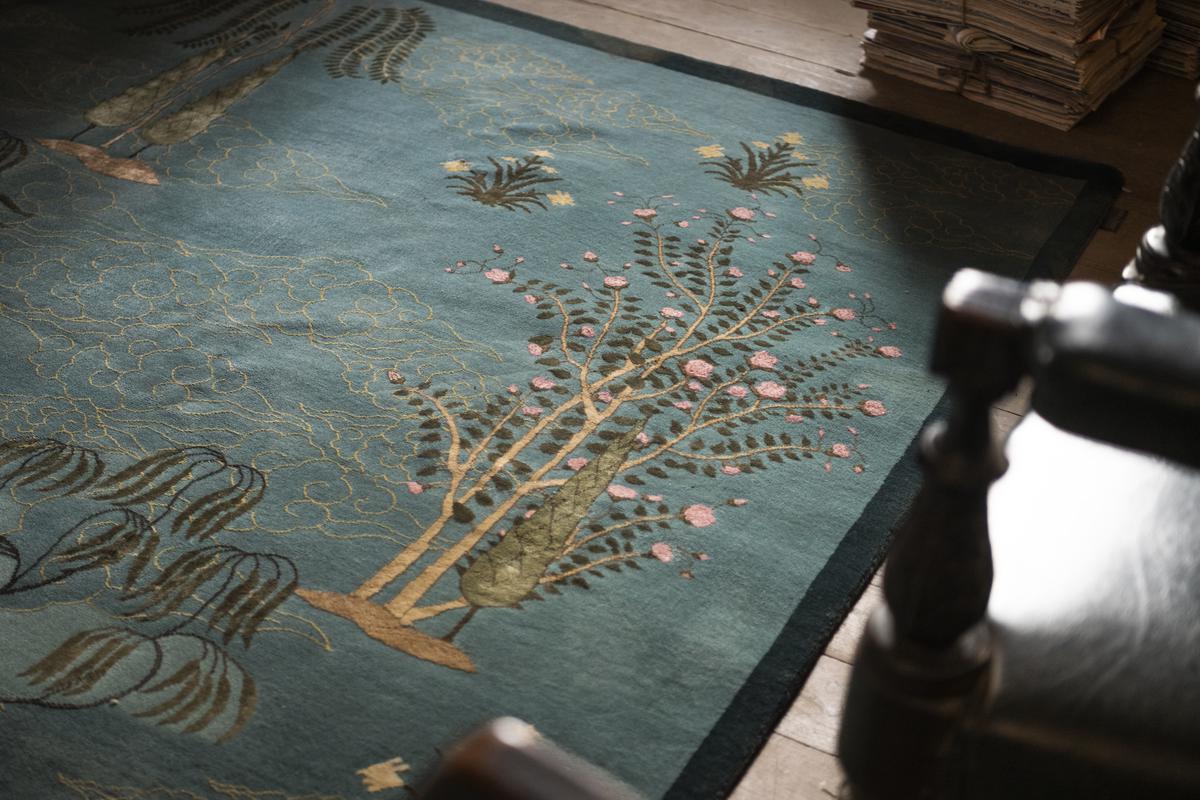
arjumand
, Photo credit: Hashim Badani
hunting grounds, which originated in medieval Iran, and came to India via our Persian and – “I know it’s a bad word to say these days, but…” – the Mughal dynasty, also gets a 21st-century update . Instead of hunting scenes, such as tigers killing antelopes, Rajaram’s hunting grounds Shows animals living in harmony with each other. “It sums up our 21st-century attitude to wilderness: interact, protect, maintain.”
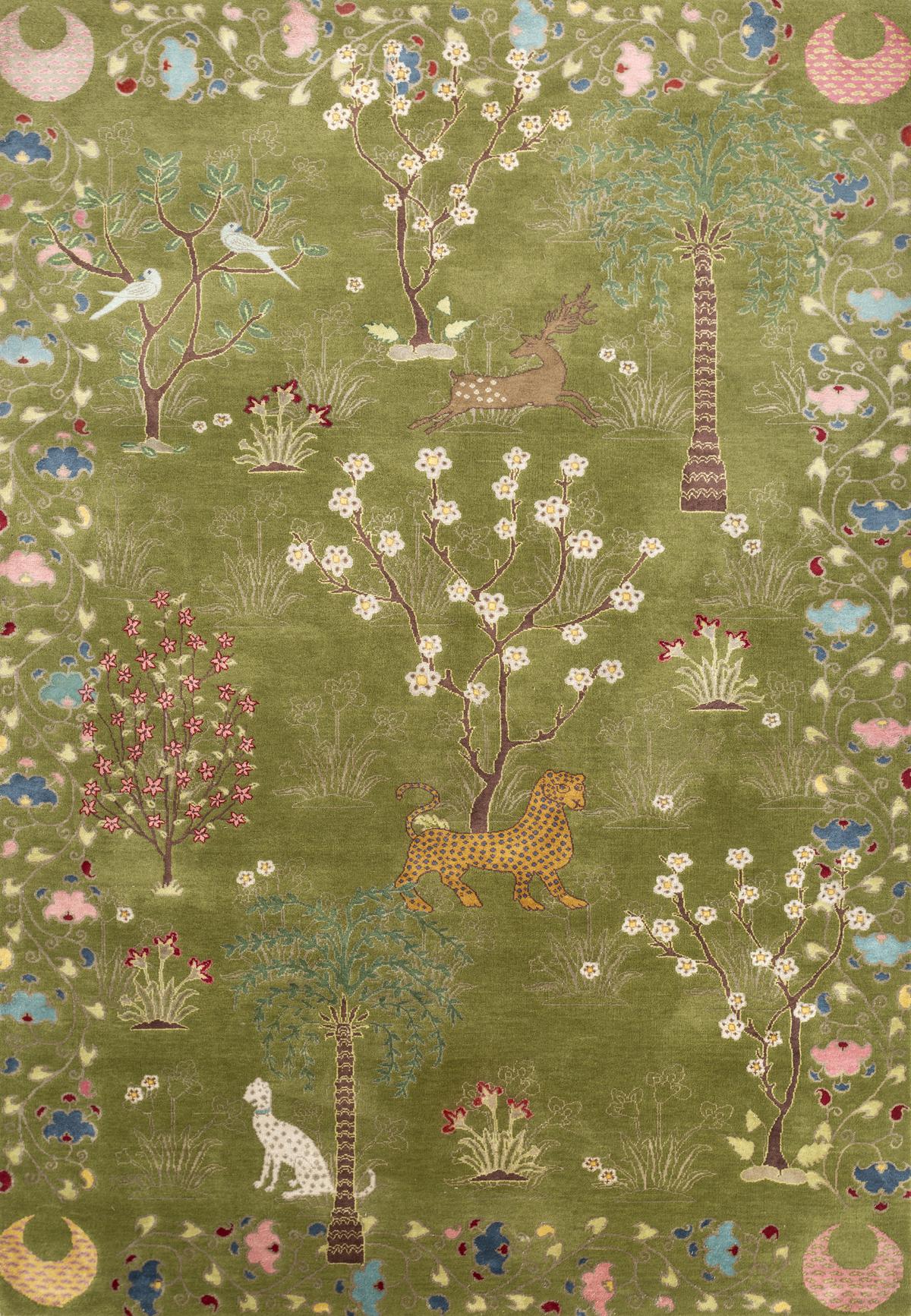
hunting grounds
Yarkhandi is a modern version of a unique tradition with a fascinating origin story dating back to the 17th-century Ladakh War, where a fight for rights over the pashmina goat between Ladakh and Tibet – supported by the Mughals and Mongols respectively – led to a treaty. which mandated that carpets were to be woven together. “From that came a carpet tradition that incorporates Kashmiri, Tibetan and Chinese motifs,” she says.
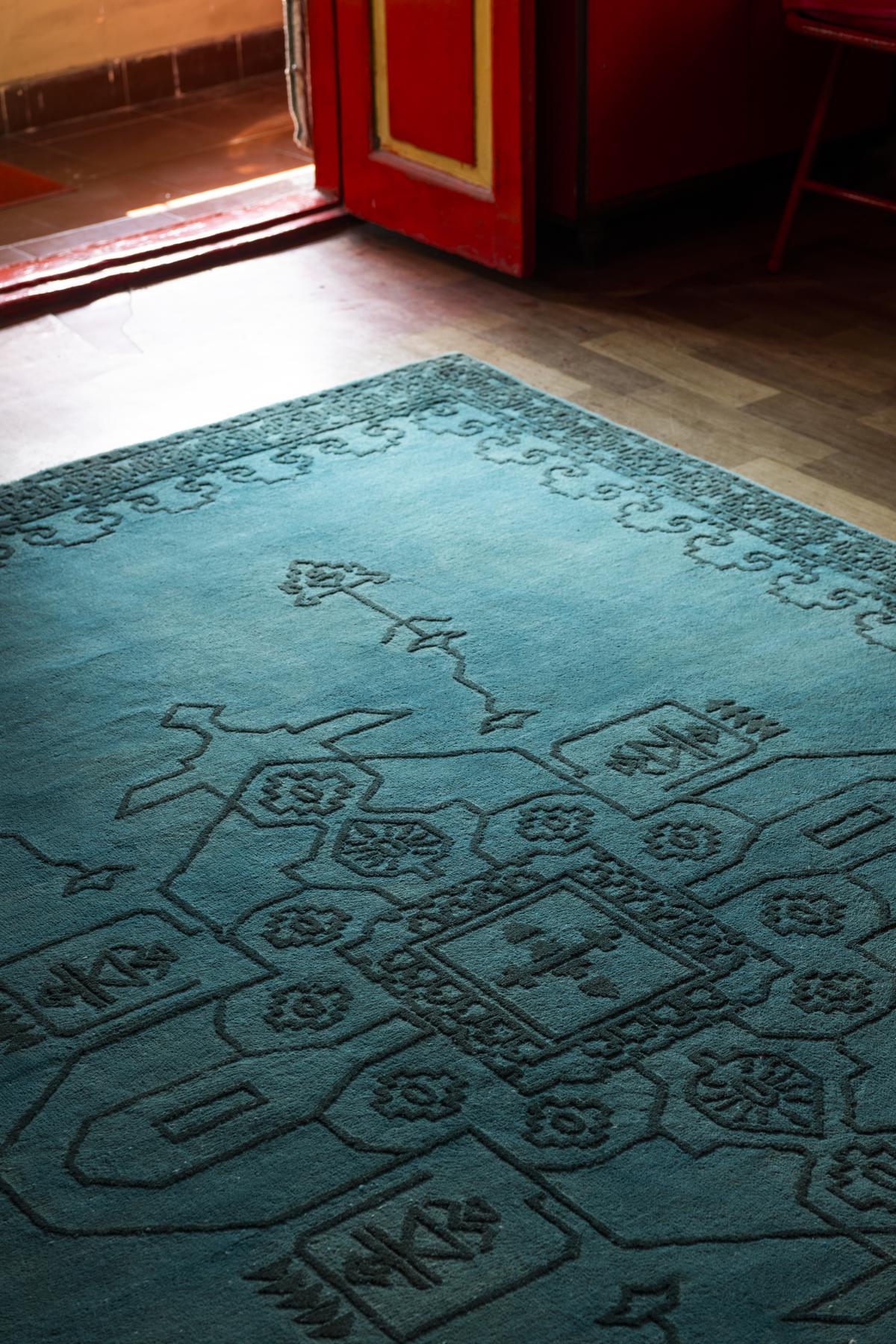
Yarkhandi
, Photo credit: Hashim Badani
With Majnu, Rajaram’s impulse has been to demonstrate how “these may seem like separate, disparate histories, but there are threads that hold them together as ideas.” that’s why she fuses Chintamani – The ‘three pearls of wisdom’ motif was adopted by the Ottoman kings in the 14th-15th centuries, but as Rajaram points out, has its origins in Sakya Buddhism during the Gandhara period – the stripes of the tiger and the leopard of tantric Tibetan rugs with spots of
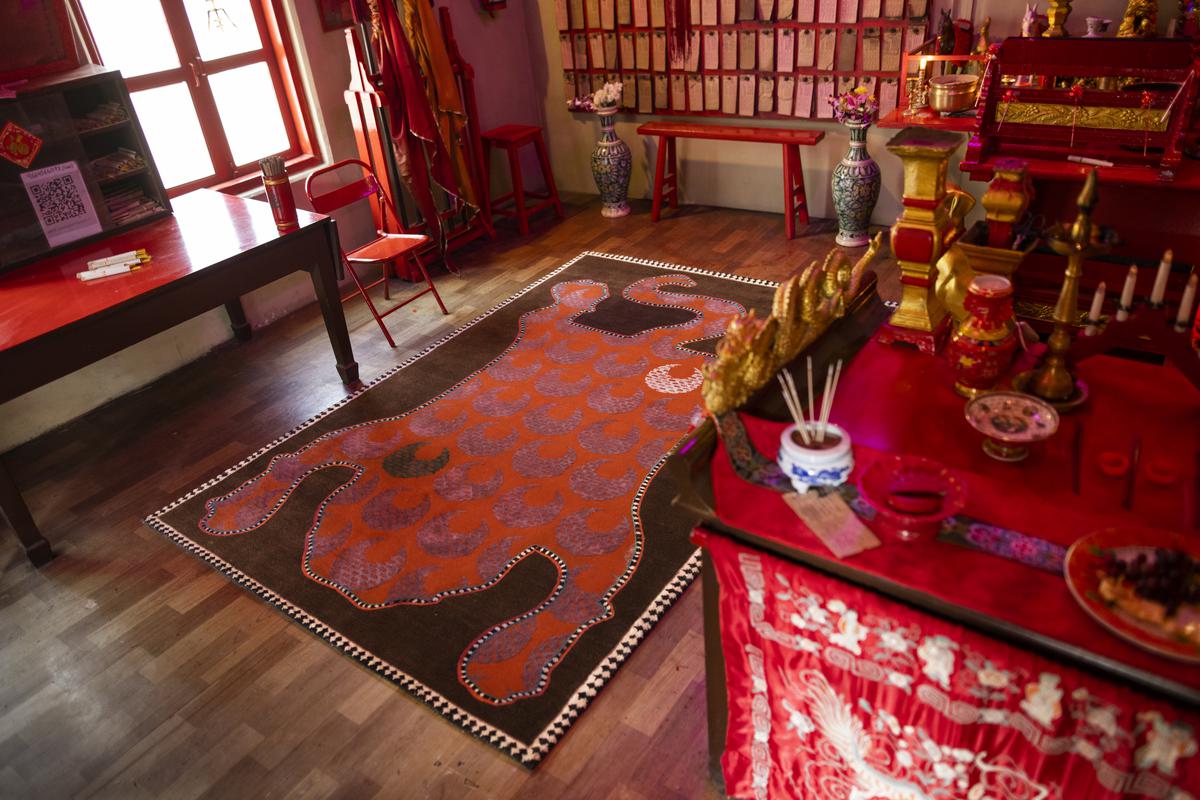
Chintamani combined with tantric Tibetan motifs
, Photo credit: Hashim Badani
need of the hour
Majnu (featuring two colors for each design) will be Jaipur Rugs’ second exhibition at the Salone del Mobile. In the summer of 2022, the brand unveiled the Brahmananda collection designed by Ashish Shah, soon after which it opened its flagship store in Milan. But this will be a first for Rajaram, who ran Good Earth’s luxury design for 25 years before returning to independent product development.
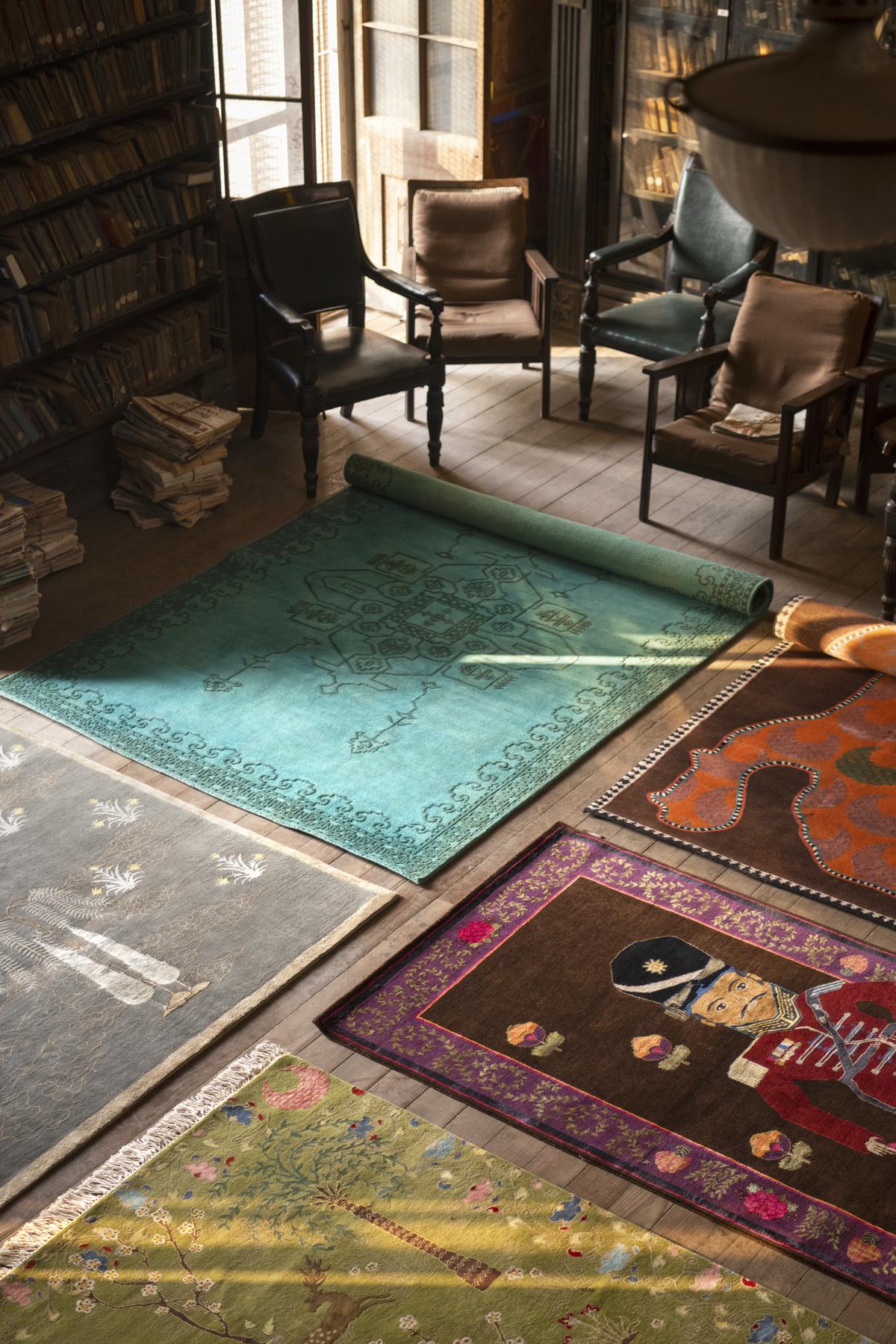
Collection of Rajaram | Photo credit: Hashim Badani
The Silk Road has always been a source of inspiration for Rajaram. “I’ve always imagined that when people meet on the street, they don’t just exchange goods. It’s not just commerce. They also exchange ideas, thoughts—they make choices about those goods. Let’s take things back.” But this collection goes further than that, claiming to champion ‘slow design’. “I have been researching Tholu Bommalata puppets from Andhra Pradesh, and I have realized that they have a strong connection to Indonesia, and the spread of Hinduism in the East. I find that, as my practice has evolved, this Now design has become about mapping history, finding these cultural connections and expressing them in a contemporary way.
Does she find it ironic that she is talking about the indestructibility of history at a time when entire chapters on time are being taken out of the curriculum? “We are all political,” she says. “I think the narrative of the moment is [trying to find] what is not true The reality of India is that we have been syncretistic for 3,000 years. My husband is a Keralite Christian, and has his roots in a family that came to Muziris in the 4th century. Is he not an Indian?
Design and creative people are needed in today’s environment, says Rajaram, “because more than ever, we need to be able to tell these stories, and be able to show in a beautiful and delightful way that our history How synchronous”.
The author is a Mumbai-based freelance journalist, writing on culture, lifestyle and technology.